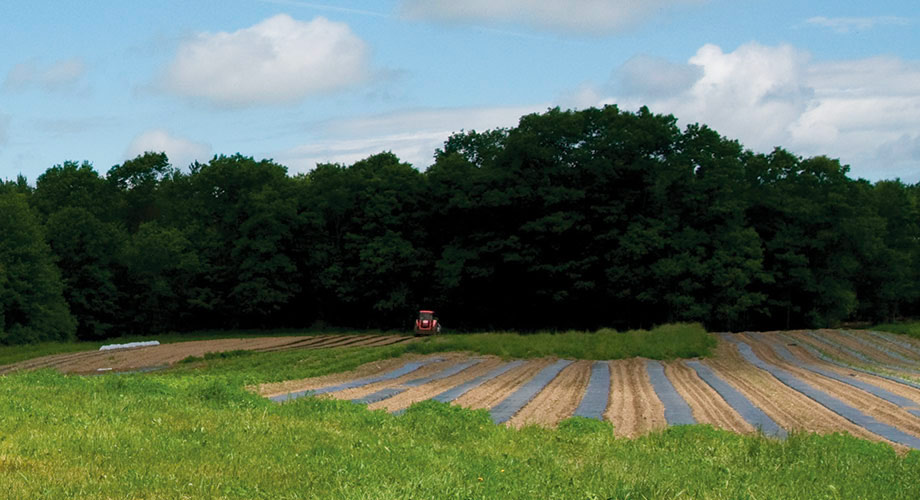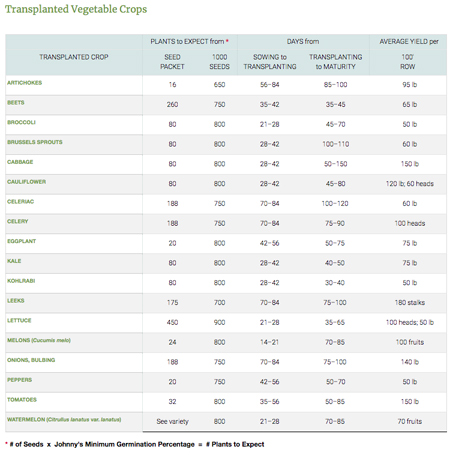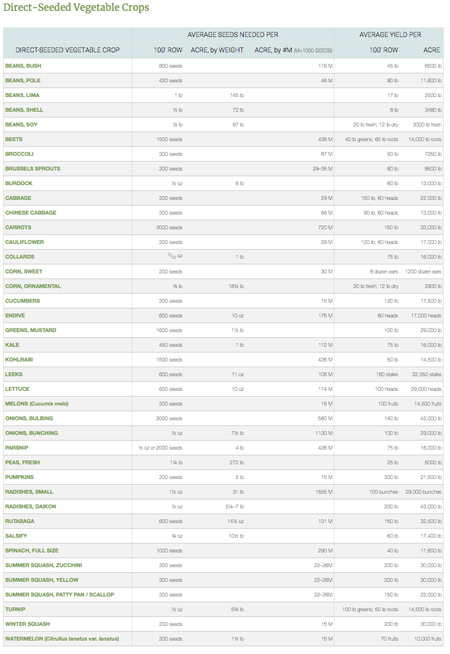- Planning & Plotting Your Market (or Backyard) Garden | An Intro to Johnny's Seed Quantity Calculators & Yield Charts
- Variety Selection Considerations | Tech Sheet (PDF)
- Gaining Efficiency on the Farm | Recommendations from 3 Experts in the Field
- Recordkeeping During the Busy Farming Season | by Taylor Mendell
- Video: Producer Cooperatives for Small-Scale Farmers | Johnny's Webinar Series
- Getting Started with Value-Added Foods & Farm Goods
- The Effect of Shorter Daylength on Winter Production
- Succession Planting Principles & Practices: Methods for Ensuring a Continuous Supply
- Recommended Crops for Succession Planting
- Succession-Planting Calculator (XLSX) | Johnny's Selected Seeds
- Johnny's Planting & Harvesting Programs
- Succession-Planting Interval Chart for Flowers
- Succession-Planting Interval Chart for Herbs
- Succession Planting Charts for Vegetables
- Video: Climate Adaptation for Vegetable & Flower Farmers | Johnny's Webinar Series
- Climate Adaptation for Vegetable & Flower Farmers | Johnny's Educational Webinar Resources
- 11 Things for Farming Elders — and their Beneficiaries — to Know About Medicaid Liens
Planning & Plotting Your Market (or Backyard) Garden
An Intro to Johnny's Seed Quantity Calculators & Yield Charts
• How to measure • How much of what to plant • How far apart • To produce just so much?
Planning your market garden layout is one of the more challenging annualized tasks of vegetable production, because multiple goals must be rolled into the planning process. Rotations, planting dates, days to maturity, duration of harvest, labor resources, and even microclimates must all be accounted for and accommodated. You also need to factor in recommended crop spacing, to calculate how many plants will fit.
It's a complex, multistep process that changes from year to year, requiring you to "keep an eye to the future, and ear to the past" as you design your next planting plan. Here are a few recommendations that will help you streamline the process from year to year.
Choose your management units
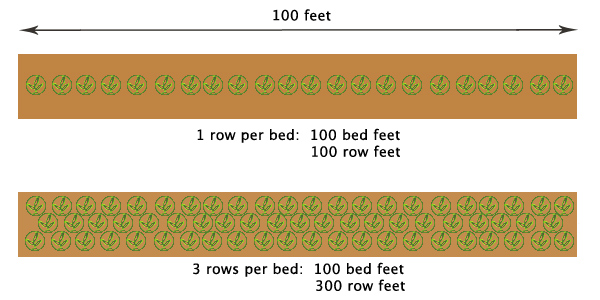
Experienced growers find it helpful to divide their market gardens or farms into management units as a way of reducing the complexity. The acre is a traditional major management unit that can be used, depending upon the scale or your farm and its layout. A management unit on a medium-sized farm might also be an entire field. On a smaller farm, it could be a block of beds. In a garden, each bed might be considered its own unit.
When it comes to management, the "per acre" expression in the context of how much surface area is directly involved in crop growing can lead to some confusion. Major management units can thus be further divided up, into rows or beds or even square feet, as in the backyard garden, to reflect the area where the plants are being grown and maintained.
As subunits, many growers favor the linear bedfoot, which is a 1-foot slice across a planting bed, as a unit of calculation. Others prefer to use the row foot (plural row feet) or, for those using metric units, row meter(s).
For the purposes of this article and the relevant charts and calculators, we use row feet, together with row feet per acre, to enable most growers to extrapolate how much seed or how many seedlings they'll need to achieve their end goal. When we refer to row feet, we mean the total length of all your rows of a particular crop. If you only plant one row per bed, the row feet is equal to the bed feet.
Breaking any large goal down into smaller units of measurement in time and space is the art and science of project management, and it's what enables us to make a start. So choose whatever units or subunits you find most useful. The overall goal of your design is to gain efficiency, reducing work and waste, while providing the best possible growing conditions for each crop.
Calculators & charts for approximating your numbers
The following are basic steps and considerations that can guide your planning.
- Figure out how much yield you want to produce for each crop, based on your market expectations and past experience. Among the sagest bits of planning advice for gardeners — no matter the scale at which they grow — comes from retired engineer and efficiency expert Mel Bartholemew in his classic book, Square Foot Gardening, to "picture the harvest before you plant."
- From there, "reverse-engineer," or back-calculate, to determine how many plants you will need to produce that quantity.
- Calculate how much space you need for that number of plants.
Johnny's has several resources to help expedite these calculations, including the following yield charts and seed quantity calculators.
- Seed Quantity Calculator. This interactive tool helps you predetermine the number of seeds or plants you will need for a given amount of space.
For Option 1, Step 1, you choose metric or imperial units of measurement. In Step 2, you choose the vegetable crop. Step 3 is where you indicate whether you are direct-sowing or transplanting. In Step 4, you enter the number of feet of row. The calculator then renders the quantity of seed or transplants/seedlings you will need.
For Option 2, Step 1, again, you choose metric or imperial units of measurement. In Step 2, you enter the in-row spacing of your seeds or plants. Step 3 is where you enter the number of feet of row. You enter the number of rows in Step 4. The calculator then renders the quantity of seed or transplants/seedlings you will need.
- The following two resources serve a similar purpose, to aid you in making the same calculations. We include these two charts in our catalog each year.
- For crops that must be started indoors and grown as seedlings that will be transplanted out when conditions are favorable, use this chart:
Transplanted Vegetable Crops • Plant Quantity & Yield Chart + Feet of Row per Acre • CHART - For crops that are direct-sown in the ground, use this chart:
Direct-Seeded Vegetable Crops • Average Seed Quantity Needed & Average Yield per Row or Acre • CHART
Cycle in your crop rotations
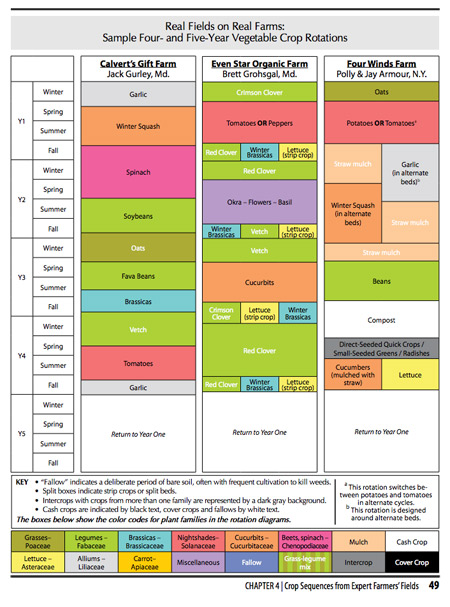
Crop rotations over time are vital to vegetable production success. Rotating crops breaks up insect, weed, and disease cycles and helps to balance nutrients across the farm.
The first component of crop rotation to take into consideration is the botanical families of your crops. Grow plants from different botanical families on the same piece of land from year to year.
A cycle should last at least three years; four or five years is better. Ideally, crops can be rotated through your management units, and you'll develop a system that includes four or five units for a lengthy rotation cycle.
Logistics, equipment, time & space
Group crops logistically and temporally by production methods, taking into consideration not just seeding practices and time of sowing but also cultivation practices, row covering, days to maturity, lines of drip tape needed, nutrient and water demand, and pest control.
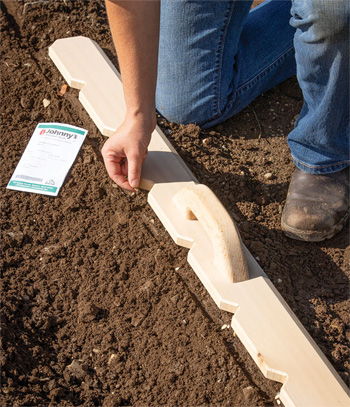
Keeping crops with similar requirements proximal to one another will expedite tasks and give the field a neater appearance later in the season. For example, it might seem most expedient to plant lettuce and onions in the same bed because they can be planted at the same time in spring. But on second thought, you realize that the lettuce will be harvested within 45 days, whereas the storage onions could remain in the field for 100 days or more. The bed will need weeding and watering long after the lettuce is gone. Consider grouping crops that are planted and harvested at approximately the same time.
Locate crops according to harvest requirements. Some crops such as watermelons and sweet corn are so heavy, you'll need a tractor or vehicle to move them out of the field. Others such as salad mix can be carried in a tub. Think about these and other access issues in planning your fields.
Now, commence!
With all these nuances and practicalities in mind, you can start mapping. Some growers use spreadsheets. Others use apps. Still others prefer index cards, with one crop on each card. Others map out the next season on graph paper, then cut the units apart and reassemble them for the following season.
However you go about it, it takes considerable skill and vision to create a multiyear planting plan. And even though you will refine it each year, once you have set it up your plan will be a tremendous asset to your farm.


